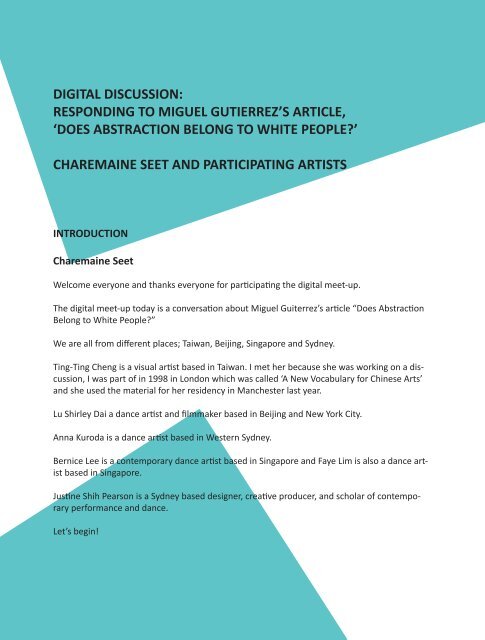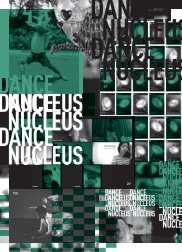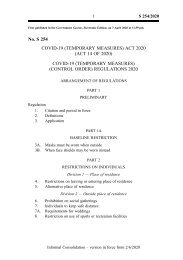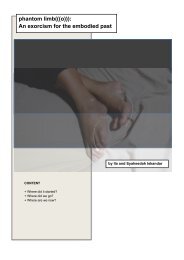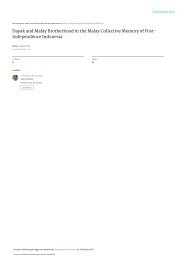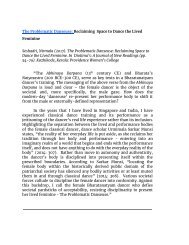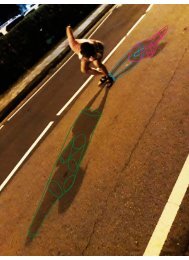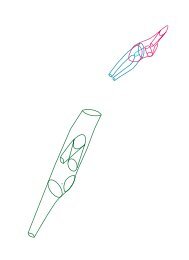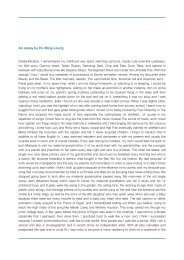Critical Path Digitalmeetup_Transcript
Create successful ePaper yourself
Turn your PDF publications into a flip-book with our unique Google optimized e-Paper software.
DIGITAL DISCUSSION:<br />
RESPONDING TO MIGUEL GUTIERREZ’S ARTICLE,<br />
‘DOES ABSTRACTION BELONG TO WHITE PEOPLE?’<br />
CHAREMAINE SEET AND PARTICIPATING ARTISTS<br />
INTRODUCTION<br />
Charemaine Seet<br />
Welcome everyone and thanks everyone for participating the digital meet-up.<br />
The digital meet-up today is a conversation about Miguel Guiterrez’s article “Does Abstraction<br />
Belong to White People?”<br />
We are all from different places; Taiwan, Beijing, Singapore and Sydney.<br />
Ting-Ting Cheng is a visual artist based in Taiwan. I met her because she was working on a discussion,<br />
I was part of in 1998 in London which was called ‘A New Vocabulary for Chinese Arts’<br />
and she used the material for her residency in Manchester last year.<br />
Lu Shirley Dai a dance artist and filmmaker based in Beijing and New York City.<br />
Anna Kuroda is a dance artist based in Western Sydney.<br />
Bernice Lee is a contemporary dance artist based in Singapore and Faye Lim is also a dance artist<br />
based in Singapore.<br />
Justine Shih Pearson is a Sydney based designer, creative producer, and scholar of contemporary<br />
performance and dance.<br />
Let’s begin!
CONVERSATION<br />
Charemaine Seet<br />
I was reading Miguel’s article again and two sections spoke to me and made me feel emotional.<br />
One of the lines in it is ‘Who has the right not to explain themselves?’ That is really interesting<br />
as a question but also a very emotional statement. I also like the end of the paragraph which is<br />
‘Dissolve, appear, dissolve’.<br />
It has always been a problem for me jumping between identities of being someone involved<br />
in Western contemporary dance and also being Asian and being brought up in Asia, feeling all<br />
those different things and becoming confused about the way that the art work I make is seen<br />
or not seen.<br />
Justine Shih Pearson<br />
I was just going to say, I think Miguel is writing within a certain racial politics being a Latinx<br />
man, living in the United States.<br />
Which I feel I kind of get, I grew up in America and that is a lot of my experience; but then I<br />
also think, there are lots of different things that influence my context. Now I am living in Australia<br />
and it is a very different context. For me personally, I am mixed race and that’s always an<br />
issue that baffles people—mostly that is what I get—but also it’s about a kind of privilege or<br />
non-privilege to certain kinds of knowledge that I think is different in America, in San Francisco<br />
where I grew up or New York where I used to live, versus here in Sydney. I’m also half Chinese.<br />
My mother is from Hong Kong. So that is a very particular relationship to Chinese-ness as well.<br />
I am noting too that we are having this conversation across Taiwan, Singapore, Australia, Japan<br />
and in that context there is a relationship to Chinese-ness and that is a very broad term in<br />
the world and has a relationship to Chinese imperialism, which does not get talked about very<br />
often.<br />
Lu Shirley Dai<br />
I relate to what Justine just said. I grew up in China, went to America for college at 18 and<br />
stayed in New York for seven years. Because of the homogeneity of Chinese culture and a sense<br />
of collective unity, I was not familiar with the idea of racial culture and identity when I was in<br />
China, nor did I pay attention to the racial construction of Asian-ness. However, after living in<br />
New York for a long time, I started to feel the complexity of my Chinese-ness while being introduced<br />
to the discourse of identity politics. It was through my learning and understanding of<br />
abstraction that I started to cultivate my cultural and national consciousness. So, I have complex<br />
feelings towards the emotional aspect of Miguel’s article. Partially because yes, I am part<br />
of the conversation as a person of colour living in New York City, dancing and performing; but<br />
in another way, I am also not part of the conversation, I don’t feel the emotion or even the rage<br />
that Miguel was referencing to.
Charemaine Seet<br />
I have a similar background, being half Chinese, first living in Asia and then living in Australia. I<br />
felt rage in the past about being pigeonholed or catalogued based on my perceived Asian-ness<br />
but until this kind of digital technology it has been difficult for me (and us) to communicate to<br />
people in similar situations in different parts of the world.<br />
Ting-Ting Cheng<br />
I found it interesting that I am the only person having a visual art background, rather than a<br />
contemporary dance one. I don’t know if it makes any difference in terms of our relationship<br />
with our bodies, which is related to race. I lived in Taiwan until I was 22, and then I moved to<br />
UK for 11 years. I just moved back to Taiwan this year. I also feel that “racial-related discussions”<br />
are not commonly seen here. Taiwan is “relatively” mono-ethnic, even though there are<br />
aboriginal Taiwanese and immigrants from Southeast Asia. I feel like the article is a part of my<br />
narrative. I feel quite emotional towards Miguel’s writing, but I can’t pinpoint why. It does not<br />
mean that I felt pushed into a certain direction. I guess my emotion could be related to moving<br />
back to Taiwan, seeing how different the concept is here compared to how it is in UK. I find it<br />
interesting that how it raises different issues in different cultural or national contexts. I guess<br />
this is my initial thought.<br />
Like Charemaine, I also really like the quote “who has the right not to explain themselves?”,<br />
I think that is the point for me. I also really like what Miguel said, “who is not here”. I feel we<br />
need to ask the question every time we make art or host art events.<br />
Justine Shih Pearson<br />
For me the most emotional part in the article was not so much that end comment, although I<br />
totally agree with it and I actually read it as very political. The thing that really resonated with<br />
me is when Miguel describes his experience at a workshop at Movement Research where there<br />
is an older white critic who he is respectful of and his feeling of stunned-ness when she says,<br />
‘Well, but how are we going to dance these things?’ or ‘What is this? How can we take these<br />
issues of race and injustice and whatever and put them into dance? Dance is about motion!’<br />
And my understanding of his reaction is, ‘how naive of her’ as he is stunned into silence. I feel<br />
like I have some of that every week, and that’s probably specific to living in a country in which I<br />
am a racial minority. But I am thinking of something that Sara Ahmed wrote in which she talked<br />
about the labour of maintaining comfortableness for the white majority and the work that people<br />
of colour do to maintain kind of just going along with it and not raising a fuss. That moment<br />
to me was very much that.<br />
Charemaine Seet<br />
If you make a fuss it can kill your career!
Anna Kuroda<br />
I was born and grew up in Japan and moved in Sydney 7 years ago. In the Japanese dance community,<br />
because of the language barrier, information is limited from overseas. I didn’t really<br />
face this issue until I came to Australia. I read this article then I felt really sad, and empathy. It is<br />
not exactly the same but when I performed in Sydney as part of a festival, at the end there was<br />
a circle discussion and someone told me “diverse people should not do contemporary dance.<br />
You should do your cultural dance.” I felt terrible being told that what I can choose to do is<br />
so limited. At the end of the discussion someone came up to me and said “That was rubbish.<br />
Just do not worry about it.” Luckily that person said ‘do not worry’ so I had the confidence to<br />
continue. When that sort of thing happens, it really stays. Like Miguel, I become defensive and<br />
have to protect myself from getting damaged by these horrible people. But not everybody is<br />
horrible. I slowly make<br />
distance and try to not look at them as part of a group, to look at the individual. I probably<br />
never would have understood what Miguel meant back when I was living in Japan. Now I totally<br />
felt empathy.<br />
Faye Lim<br />
Hi. Thank you for sharing what you already have and also, Anna, for telling us about the feelings<br />
you had at that time. When I first read the article, the title was not something I paid attention<br />
to. Yes, definitely emotions came up. I shared some of it on Facebook with friends and it started<br />
a small conversation. One of my friends, I realised, read my emotions and read the article differently<br />
from how I did, and I want to start there.<br />
They were concerned about abstraction with regard to ownership – that it is a concept that<br />
shows up in different cultures, and certainly doesn’t “belong” to white people. That was, for<br />
them, the problematic provocation in the article. I was paying more attention instead to my<br />
feelings of internal prejudice and discrimination against parts of myself and the playing out of<br />
those feelings in how I made decisions dancing in the US more than 10 years ago.<br />
Those feelings had to do with me aligning to ideas of neutrality, aligning my body to the whiteness<br />
in post-modern and contemporary dance that I think we are talking about here. I was in an<br />
improvisation-based troop, with a group of white dancers, and we were auditioning new dancers.<br />
I realised after, that in the audition, I was (perhaps we were) looking out for dancers who<br />
embodied “neutrality,” like there was such a marker for the ability to take on different qualities<br />
and states in improvisation. I realised only after, that how I decided who and what was not<br />
“neutral” enough was racist. That thought process had much to do with framing the “neutral”<br />
dancing body as a person who danced from a place of abstract concepts, and with no cultural<br />
markers, no needs, no causes. It centred privilege and whiteness.
Bernice Lee<br />
I guess that’s part of the problem, the idea that a body or a person can be neutral. I guess it’s a<br />
problem that faces abstraction as an idea? As if to be abstract is to be neutral. But actually, it’s<br />
just another point of view, another option. A third or fourth or fifth way to see something or<br />
talk about something. I think it’s a mistake, to imagine a person can ever truly be neutral -- it’s<br />
always ever an attempt, right. Like to mediate between points of view. I think part of what Faye<br />
might be referring to is growing up in a multiracial society as a person of privilege by being in<br />
the majority race. Where people look at you and maybe have some kind of confirmation bias<br />
because you look like them, and this makes your growing up years perhaps easier. Like I didn’t<br />
take a bus and get looked at for being “other” because of my skin colour and could blend in<br />
more. And a huge part of the privilege is also economic.<br />
Being able to blend in, but then going to live and study where you’re the minority, like the<br />
States, living in a place where their power over our imaginations and thinking has been so<br />
strong -- like we all watched Hollywood movies, Disney movies -- and then more fully realising<br />
how troubled the racial politics are in the country, listening to people have passionate conversations<br />
about such issues, being inspired by the idea of people voting in a black President at the<br />
time I was there, and how all these conversations wasn’t very obvious to us from the outside,<br />
that America’s cultural output had these racist underpinnings. And it’s maybe similar in dance.<br />
Why did I even want to study dance in the States? What did I know? How come all of us having<br />
this chat here, we can name some American names of artists and know quite a fair bit, but I’d<br />
be hard pressed to really be able to talk about the dance history of other countries. This maybe<br />
is less about race and more about geopolitical relationships, but race is so tied up in it. I think<br />
for me, working as a dance artist in Singapore can be very exciting and also frustrating, because<br />
we are always forced to confront identity, our relationship to traditions and cultures, and how<br />
our bodies look versus how our bodies move. Like nobody can be seen as neutral, although we<br />
can potentially all be seen as abstract bodies. This isn’t always true all the time, but there’s a<br />
feeling for me that it’s a possibility. But when it comes to more practical issues of funding and<br />
frameworks and representation, then I’m less sure. Although there are also ways that artists<br />
strategise in terms of dealing with issues to do with these minority-majority, traditional-contemporary<br />
dichotomies, and there’s a kind of privilege in being able to do that.<br />
And for me, I had the chance in Singapore to shift from my very postmodern dance training,<br />
which my professors never taught as neutral, but as somatic, with an understanding that<br />
there’s a lot of cultural appropriation and resisting western classical ballet norms, resisting<br />
modernism, to doing a range of repertory from people coming from different dance and geopolitical<br />
backgrounds, then training in Bharathanatyam and some Javanese dance forms, and<br />
so on. And it’s an eye-opener, always, trying to make sense of how dance, as a physical, artistic<br />
practice, lives separate from but is also entwined with cultural beliefs, lived experiences, and<br />
so on. I love that, as a dancer, I can try to embody different stuff, and try to figure out myself<br />
in relation to different (cultural) ideas, danced images, and so on. I see it as my privilege, that I<br />
can become an abstract body within all these cultural frameworks and produce something new<br />
from there.
But of course there’s also the issue of, even if I were to try to create work where I think of<br />
myself as an abstraction formed of lines in space and materials and colours and temperatures,<br />
I’m still going to look like a 30+ year old Chinese woman to an audience. And people are likely<br />
going to read something into that, especially if there are other bodies in space who look very<br />
different from mine<br />
Charemaine Seet<br />
What is really interesting to me is that we started with the emotional part of this but now the<br />
political part is really starting to come through, which I think is exciting. I guess this is what I<br />
found saddening about Miguel’s article is that he talks about being colonised and it caused him<br />
to back away from abstraction. Reading that, made me feel suddenly paralysed artistically. I do<br />
understand this problem. But maybe the answer it to not give power to the gatekeepers and to<br />
keep on doing what you really want to do artistically.<br />
Justine Shih Pearson<br />
You know, that’s part of a specifically white, mixed-race politics, but then I also think that everybody<br />
here has had some experience of living in a white-dominated society in which we are<br />
encultured in ways that are part of a white society’s way of looking, a Western sort of ideology.<br />
I am not sad by Miguel’s article. I think it is anger: he is rightly angry, and I feel anger. To me,<br />
it is not a huge revelation to hear what he is saying because I think we have been having this<br />
discussion—I am also a scholar of contemporary performance and culture so this idea of power<br />
inequity and colonisation, and the racial politics that we have inherited from colonisation, is<br />
basically what I talk about every day. I am quite angry about it, but the strength in the article<br />
to me is really, as Faye pointed out, about this question that is specific to dance, contemporary<br />
dance, and it is specifically about this idea of contemporary dance and particularly postmodern<br />
dance being born out of abstraction and that’s something that people of colour can’t have access<br />
to.<br />
Because I am thinking about Anna’s story, which I think is just outrageous, but I am also thinking<br />
about a conversation I had with a white Australian choreographer who was saying ‘Why do<br />
all of the artists of colour, why do they always make work about their culture?’ and I was like,<br />
‘You don’t think you’re making work about your culture?’<br />
So, the idea that whiteness is neutrality… the idea that either in a casting decision or in terms<br />
of cultural inheritance there is some sort of neutrality is, I think, the problem. I’m thinking of<br />
the Tongan artist Latai Taumoepeau—in some of her work she has made she looks at weaving<br />
patterns within Tongan art and she uses that pattern and rhythm to make movement from. You<br />
cannot get more abstract than that in terms of formal abstraction, which is so much a part of<br />
Western art’s preoccupation. Not to mention that the whole Western modernist art movement<br />
is based on a whole bunch of appropriation of South Asian, Southeast Asian, and African cultural<br />
material…. But it is the privilege of whiteness within a white-dominated society that gets<br />
to pretend that their work is not from anywhere but the origin of the artist’s vision.
Charemaine Seet<br />
I think it is really interesting that we have people in our discussion group who are coming a<br />
pure Asian background and still living in an Asian culture.<br />
Lu Shirley Dai<br />
I have been thinking a lot about not seeing abstraction as power. We usually associate abstraction<br />
with theory because of its connection to Western philosophical structure that has been<br />
dominating much theoretical discourses and studies.<br />
But for me as an artist and as a person of colour, I think a lot about abstraction as my means of<br />
working and as means of representation. I think partially that’s what Juliana May was talking<br />
about. Because there is a distinction between me holding on to that power and me using it to<br />
address the symbolic representations, the references or even the political content that I want<br />
to talk about in a formal way in a structural way.<br />
A lot of the works I saw in New York were falling into this topic of identity politics. There is so<br />
much emotion already being expressed, not personal emotion, but trying to emphasise the<br />
aspect of emotion and almost making it as therapeutic. As an audience member, I find it really<br />
hard to relate. However, there is a really amazing Brazilian artist Lygia Pape whose works I saw<br />
in Mexico. In a film, she had three cubes on the ground––yellow, blue and white. Soon there<br />
were three black men coming out of the cubes, stepping, beating the drums and playing with<br />
the rhythm.<br />
For me that moment in the video was so powerful because I think she was exploring both how<br />
she could criticise or asking questions about abstraction through a different culture. I think that<br />
to me was more interesting than trying to eliminate abstraction in my work.<br />
Also, what exactly does cultural dance mean?<br />
Charemaine Seet<br />
I really love what Justine said. What dance is not cultural? ‘cultural dance’ is a loose meaningless<br />
term. I think we all know that abstraction is pretty much an international thing. Everyone<br />
uses it. My attitude is f***K it. Do your work, whether people accept it or not. When I was in<br />
the UK, people could not comprehend that I was involved in postmodern dance. It was really<br />
bad then but now that I am older things have improved. I can engage with postmodern dance<br />
on my own terms and I know it’s not going to be a problem.<br />
Faye Lim<br />
It feels to me that there are different ways to read the article – ways to meet our own needs.<br />
And it might bring up anger or sadness or self-reckoning. I’ll go back to something Ting said<br />
earlier and respond to Charmaine as well - about artists who are working and living in Asia.
So, Ting said that moving back to Taiwan, things changed for her and I felt the same. Since<br />
moving back to Singapore, my community of friends and peers I work with more intimately, are<br />
Chinese. But the broader network of artists I’ve worked with here is quite multi-ethnic, given<br />
the construct of Singapore. Not all the artists are directly referencing classical or traditional<br />
art forms. Some of them are and some are deconstructing, exploring and experimenting with<br />
different lenses, looking at how to approach the culture of what they’ve inherited, or they<br />
have studied for a long time. Coming back to Singapore and being in this community of artists<br />
opened my eyes.<br />
I spent two years at the World Arts and College Department in UCLA and dance courses were<br />
described from the perspective of the lineage of the art form. So, ballet was not just called<br />
ballet and that was what the department was trying to do. But I felt for me, it actually strengthened<br />
the place of post-modernism and Eurocentric conceptual theory at the top it, using that<br />
as the frame for how we view other cultural forms.<br />
Back to Charmaine’s question - I was really bothered and annoyed like ‘Why do I have to explain<br />
what I’m doing? What is contact improvisation? Why post-modern dance? What is this<br />
work about?’ and it was terribly annoying for me at that time. But over the past eight to 10<br />
years, I started really valuing these questions and the opportunity to grow and to understand<br />
my place of privilege within this community. And even though I’ve not put in as much “fulltime”<br />
time working in the field of dance in Singapore (as some of my peers and colleagues),<br />
there’s something about my certificates, my MFA, BA from the U.S. that help some institutions<br />
here acknowledge me as a legitimate dance artist. I have peers and colleagues who have been<br />
dedicated and working hard and I believe they have been disadvantaged by the system because<br />
they do not have the formal academic degrees.<br />
Charemaine Seet<br />
Oh my God, your education is wonderful. I have to say coming from another generation of<br />
dancers I am just so impressed by the articulate, wonderful ideas that are coming from you<br />
guys. It’s really inspiring. It makes me feel really privileged just to be listening to you. I felt the<br />
same way actually at a workshop I attended in New York led by Tere O’Connor. I was listening to<br />
how the young artists spoke, their analysis and their confidence … that is the result of education.<br />
Faye Lim<br />
I think the emotions and the tears do not mean that I’m paralysing myself. I think that was what<br />
my friend (from the online conversation) thought too, that my expressions point to a self-paralysing<br />
guilt. To me, it’s really a process of understanding and accepting and as you said - where<br />
can we go from here? There’s a lot of richness and there’s a lot of power that my peers, my<br />
friends have that I don’t have either depending on the circumstances. But on the topic of saying<br />
you are a dance artist – not everyone here in Singapore who says they are a dance artist will be<br />
acknowledged that way and there are implications, such as in funding, in where you can teach,<br />
etc.
Charemaine Seet<br />
Well this is in a way true everywhere. But I feel like through my life I’ve been asking too many<br />
times permission to be accepted as a dancer or an artist or a human being. It’s over now. I’m<br />
saying what I am and that’s it. But I get what you’re saying, if you want funding and want people<br />
to take you seriously, you have to play the game.<br />
Lu Shirley Dai<br />
There’s a question I want to propose to the whole group about the relevancy of Miguel’s article<br />
to all of us. That’s probably one of the reasons Charemaine arranged this group, as we all had<br />
experience studying, working in America mainly and we are all Asian faces. I want to ask about<br />
the relevancy of identity politics for Asian people, with our ethnicity culture? I have this idea of<br />
“am I being brainwashed by American identity politics?” and “what is my position and my directions<br />
in my creative process, since especially now I am not in the States.”<br />
I have been reading this article from a Chinese professor talking about what is Asian-ness,<br />
about the concept of universality as particularity and she was actually proposing forming an<br />
Asian theory which is generated from the Asian history, but is based on empirical reasonings<br />
and definitely very different from Western concepts about universality. So, I’ll stop here, and I<br />
am curious to hear about everybody’s thoughts.<br />
Bernice Lee<br />
I think when I read the article, I was emotionally connected to what he felt about race and his<br />
identity. But I was reading it in an abstract way and applying it to myself in a sense of for me<br />
it’s about how we relate to power and what other different contexts that creates his reality. For<br />
example, in Singapore, like if you come from a Malay dance community, there is a different type<br />
of power there and people play with it in different ways to create a relevance for themselves in<br />
the kind of cultural landscape.<br />
So, I was just reading his article in the lens of how am I working with my reality and there’s<br />
privilege in my world in the sense of. Yes, I’m Chinese, I come from a certain educational background<br />
but also there’s other reality which is that like the expectations on me as an individual<br />
were quite indifferent growing up and that’s very specific and it’s not purely about race and it’s<br />
not purely about identity. It’s about like let’s say the family or just the smaller social circle. So, it<br />
was relevant in that way not necessarily in the history of Blackness and Latin-ness in you know<br />
in America. I think the emotion is different here in Singapore, which is multicultural, is cosmopolitan.<br />
It has all these things about Asian-ness and Western-ness, it’s been in my head since<br />
birth basically and I think there is something in it that captures the sort of complexity of the<br />
experience.<br />
Justine Shih Pearson<br />
Faye’s tears… that’s to me the point of this article—and it is the same as when I say that everybody’s<br />
doing cultural work. Because the point is that in fact we don’t live in a vacuum. We all<br />
live in particular inherited power structures, and power structures that we participate in making<br />
and holding up, or not, or we’re trying to undermine or whatever.
I totally agree with Bernice, it is about who has got power when and so for Faye to say, in fact,<br />
‘I have to think about the kind of power that I bring to my situation, particularly in Singapore,’<br />
I think that’s the point right there. What Miguel is noting is that certain dancers, choreographers,<br />
critics and audience members within the American political context don’t have to do<br />
that kind of reflexivity.<br />
I would say we’re not just Asian faces all together, but we’re all people who are crossing into<br />
different cultural contexts all the time. And so, what that gives you is a kind of very immediate<br />
and visceral experience of the changing hierarchies and power dynamics going on. That stops<br />
you from taking it for granted and going, ‘Oh, that’s just the way it is.’ So, Charmaine you want<br />
to do postmodern dance, go ahead do postmodern dance. But because you’re in a political context<br />
in which you are not stealing anybody’s thing that you’re not entitled to by doing Western<br />
contemporary dance.<br />
In the Australian context, I feel it’s quite hard to have this conversation without talking about<br />
Indigenous politics, Indigenous/coloniser binaries, and also in our region in terms of Asia but<br />
also the Pacific because that’s the political landscape here and it’s always relative. So, what we<br />
have entitlement to do or not do is always contingent on who we are in the context that we are<br />
in.<br />
Charemaine Seet<br />
Well this is in a way true everywhere. But I feel like through my life I’ve been asking too many<br />
times permission to be accepted as a dancer or an artist or a human being. It’s over now. I’m<br />
saying what I am and that’s it. But I get what you’re saying, if you want funding and want people<br />
to take you seriously, you have to play the game.<br />
Justine Shih Pearson<br />
No, I don’t mean that Charemaine. I just mean that postmodern dance has been made on a<br />
lot of power, globally on a lot of power. But you know different rules apply to doing someone’s<br />
Indigenous dance from Arnhem Land because the history of dispossession and cultural appropriation<br />
in Arnhem Land by the West is different.<br />
Charemaine Seet<br />
I guess the point I was trying to make, quite clumsily, is that what I got from Miguel’s article was<br />
his frustration, his anger, but also it was a reiteration of problems that have been going on forever.<br />
That frustrated me. I didn’t want to get involved in feeling terribly torn by the problems. I<br />
wanted to just try and be honest to what I wanted to make (obviously within the realms of not<br />
being horribly offensive) without feeling “paralysed” by guilt or resentment. Not to feel that I’m<br />
letting down the side or I’m not understanding how I am complicit in this situation. That’s colonisation<br />
as much as anything. The real hurdle for me is that I have been identified as “other” in<br />
many spaces.<br />
Justine Shih Pearson<br />
Could that be liberating?
Charemaine Seet<br />
I think the articles is positive in that it makes people think who haven’t considered this yet. For<br />
myself, seeing Miguel suffer his frustrations made me feel more despairing of change. It may<br />
help me reassess whether or not I can just take a slip out of this or not? Not sure if that is liberating<br />
though. Perhaps someone else has something to say about this. Anybody else?<br />
Ting-Ting Cheng<br />
So, for me, in reaction to what Charemaine was asking, I found it really related to me. I can<br />
completely relate to Miguel’s position. Of course, it has a lot to do with I used to live in UK and<br />
my research. I’ve been discussing related issues in my works. I asked myself, did I or do I feel<br />
limited to what I’m doing, like have I ever been told if I should go this way or not. Probably it<br />
didn’t happen to me directly, but I can feel or see this happening around me. I was very angry<br />
when I heard Anna’s story. This is so ridiculous. I can’t believe it’s still happening at this day of<br />
age.<br />
And Shirley, you were saying that you wonder if you’re brainwashed by the American’s identity<br />
politics. Sometimes I was told the same thing here, like, “oh you’re Western because you were<br />
in UK, this cannot be applied here.” But I would like to go back to what Justine was saying, “we<br />
don’t live in a vacuum.” It’s not only about how we see ourselves. It’s about our relationship to<br />
the world. Even though we don’t buy into this identity politics, identity politics does exist, and<br />
people do see us in a certain way. I don’t think we are “brainwashed”. And to go back to what<br />
Faye was saying, about moving back, I think I might still be in the phase of “feeling annoyed”. I<br />
miss this type of conversation. I have been discussing race and culture in contexts like this for<br />
a long time. And I find it difficult to have the type of conversations here, since people here are<br />
not buying into this identity politics. I am constantly told that I’m too sensitive, too PC…etc. I<br />
think it’s interesting how the issues are considered in different contexts.<br />
Another thing I’m thinking about lately was that, I remember Juliana was saying, one of the<br />
problematic things about Miguel’s article is the binary of “people of colour talking about politics”<br />
and “white people talking about abstraction”. I don’t know if this is too much of a derail.<br />
There is a man in Taiwan, whose name is Chi Chia-wei. He is the first gay man coming out of<br />
the closet in a press conference in Taiwan in the 80s. He is an activist in gay rights movement.<br />
Lately, people found out that he is supporting a politician whose party is the one boycotting<br />
same-sex marriage. People got really angry. Then, I read an article. It says, if you really believe<br />
in liberating LGBTQ+ people, seeing them as everyone else, then they have the right to vote for<br />
whoever they want. They don’t need to vote for the party that’s supporting gay marriage, just<br />
like everyone else. I think that’s the thing. Sometimes I fall into this trap of “people of colour<br />
need to be in solidarity, and we can’t be like the white people”, but I guess the real equality<br />
is that we can do whatever we want. We are allowed to get away with things, allowed to not<br />
to explain ourselves. What I’m trying to say is that we should hold the same standard towards<br />
people of colour and white people.
Another thing I find frustrating is that, I have been asked by other Taiwanese artists about “how<br />
to be successful in Europe”, “what Europeans like to see in Asian art”. Sometimes it’s not really<br />
about what Europeans expect Asian artists to do, it’s how some Asian artists believe what<br />
Europeans would expect Asian artists to do. They look into how to get famous in the “Western<br />
world” by following trends. I think that’s very frustrating. And then back to the case of Anna, I<br />
feel there is a limitation, sometimes you are expected to do “cultural”, “political” things, other<br />
times you are criticised that, “why people of colour always talk about politics, it is so tiring.”<br />
Whatever we do is not good enough.<br />
Charemaine Seet<br />
I think I get that a lot Ting, I get what you’re saying. I find it annoying too that we are so concerned<br />
with taking care of everything. We’re like making sure the politics are okay, and we’re<br />
doing this and looking and analysing and no one else is doing that. I feel like I don’t mean to<br />
throw it out but I think there is some liberation available or there’s some sense of empowerment<br />
that we can get from stepping away a little and going, I could explore Hip Hop, I could<br />
explore, as long as I’m not insensitive and appropriating in a disrespectful way or like the<br />
person that you mentioned Justine, who is using the Tongan designs to create something. I just<br />
suddenly felt … when I read Miguel’s article … just kind of shut down and it was the same feeling<br />
I felt when I would walk in to a space in the UK or another “white” space in the past … shut<br />
down. It was particularly hurtful when it’s an artistic space and you want to feel free to let your<br />
defences down to make your art. Anyway, thank you. Anna did you want to say something?<br />
Anna Kuroda<br />
When I read his article, it was almost like I read his diary of seven bad days, days I have also<br />
had. The situations make you traumatised. I don’t have to change people by presenting my<br />
(abstract) work. I just let the audience be open in how they think about my work. I don’t have<br />
to say this movement is coming from this and this. I don’t have to educate the audience. I continuously,<br />
never stop, making my work, because otherwise the dominant people win. I have to<br />
continue my practice by not losing to those hurting memories. It hurts but I remind myself that<br />
individuals, not a group, are the cause. Generalising is dangerous. People try to put me in a box.<br />
I try to move away but not stop making work.<br />
Charemaine Seet<br />
Just a little anecdote if anyone’s interested; in the 90s, I was part of a company in London,<br />
called Union Dance and it was comprised dancers of colour, in particular black dancers. We<br />
were funded by the City of Westminster to produce “multicultural” dance. Near the end of my<br />
time there I advocated that we commission a piece by an English choreographer who was very<br />
much influenced by Steve Paxton. So, it included improvisation, contact and other postmodern<br />
dance elements. Very Abstract! It also included a lot Capoeira, which was very “in” in the 90s.<br />
Union Dancers still retained their personal movement styles offering a new context for their<br />
dancing. It felt liberating to me to be able to dance like that. It was a lovely piece, we all enjoyed<br />
it. AND we got that weird look from the dance community, which said ‘Why are you doing<br />
that? That’s not your thing. It doesn’t suit you’.
So, you know Anna it’s been going on forever. It’s just like Ting says … it is really horrifying to<br />
hear that it’s going on STILL. Lu, you have a sense of this? Sometimes do you feel a little push<br />
to do something that is Chinese-ish because everyone gets really excited when you mention it<br />
… like, “yeah, Chinese stuff!”? Of course, we are all struggling to get recognition and support<br />
for our dancing and sometimes one might think “yeah, I do love this too maybe I’ll emphasise it<br />
more because people seem interested”. Does one want to feel guilty about that?<br />
Lu Shirley Dai<br />
Well, totally and to be honest I was asked a lot whether in college or in my MFA grad school to<br />
perform Chinese dance, but I have very limited knowledge or memory of Chinese traditional<br />
dance vocabulary. It’s also funny because when I try to do a modern dance or a postmodern<br />
dance people always say, oh we can see the Chinese style. Also, abstraction really helps me<br />
reconsider about my Chinese identity and cultivate my cultural consciousness because that’s<br />
really what I’ve been experiencing while when I was in the States.<br />
In a way, I relate to the “paralysed feeling” that Faye was saying. I feel being forced to do a lot<br />
of things and after a period of time I then start to understand and articulate why I made those<br />
decisions. For example, for the first four years of my artistic exploration I was doing purely<br />
abstraction. I was a big fan of Trisha Brown. I talked only about geometry, lines and space. then<br />
I realise oh, no, I forgot that I’m Chinese and then I start to add Chinese elements in my work<br />
almost to prove that I am Chinese, even though I am Chinese. I tried to use Chinese symbols,<br />
such as festive paperwork that you see in Chinese New Year’s and suddenly, I realised my understandings<br />
of China are not much different from how Americans understand China, how they<br />
see Chinatown. So that’s how I get to explore more about representations, about how abstraction<br />
in a way can be effective and constructive in terms of understanding the coexistence of<br />
different cultures. Otherwise, I would simply just make a piece just to say that I am Chinese or<br />
just to fall in the category of identity politics.<br />
Charemaine Seet<br />
When we studied Trisha Brown’s choreography in NY recently, and I was looking at it from<br />
the point of view of the 80s, the era in which she made the movement. I recognise some of<br />
her movement as influenced by African-American dance, it’s fascinating. The ripples or waves<br />
through the body are reminiscent of the early Hip Hop work, and there is so much traditional<br />
Jazz movement … in her shoulders and weight transfers, footwork too. We all absorb what is<br />
around us. It’s all there. How do we see? Who owns everything? My research at the moment is<br />
about how we see and experience body language in dance as “Chinese” or other.<br />
So, suggesting a thing exists in a cultural vacuum of course is ridiculous. But I think when you’re<br />
in a predominantly white space, the pressure to fit into a kind of identity that makes you “more<br />
acceptable” is painful. That’s why Miguel’s article just brought those feelings back, I guess for<br />
me and all of us perhaps.
Lu Shirley Dai<br />
Actually, can I ask a quick question to Ting? Because your primary practice is in visual arts and<br />
so much of what we’ve been talking about really relates to the body and which is very apparent<br />
in the discipline of dance. But abstraction mainly comes from the visual art theories and<br />
cultures. I wonder in the discipline of visual art, have you found how your peers and colleagues<br />
use such identity politics influenced ways of thinking to apply to their works or are the ideas of<br />
abstraction still quite prevalent in both representation or integrated process?<br />
Ting-Ting Cheng<br />
I think it’s interesting that even though visual art and contemporary dance sound different, but<br />
I feel every discussion here applies to me. Even though they didn’t directly happen to me, at<br />
least I don’t consciously feel that way, I have seen cases like that happened to people I know.<br />
I have a Taiwanese friend who was studying art in the U.S. Recently, I started seeing a lot of<br />
elements in her works that are very “Chinese”, as a concept. And I feel a bit weird, because I<br />
know that’s not a daily language in Taiwan. It feels very “Chinatown”. And interestingly, when<br />
I talked to her, I asked, “do you feel pressured to go a certain way?” She answered, “no, I’m<br />
just interested in finding my ‘root’.” I’m not saying that she really was pushed into a certain<br />
way. I believed that sometimes people are subconsciously pushed into things without realising,<br />
including myself.<br />
Another example came to my mind. I don’t know how related it is. Perhaps it’s a reverse case.<br />
A friend of mine is Spanish. When we studied together in London, one of our tutors, who is an<br />
amazing artist from Iran, she kept pushing my friend into talking about her identity, her Spanish<br />
heritage, but she wasn’t interested in. I guess what I’m trying to say is that I don’t feel visual art<br />
is much different compared to contemporary dance in terms of the issues we are talking about.<br />
And Shirley, you were saying that people still see “Chinese-ness” in your works, even though<br />
you were doing other things. I feel the same way sometimes. I got people came up to me and<br />
said, “I see Asian-ness in you works”, “this is so Asian”. I got annoyed. I feel like, “really, you really<br />
do?” But then I think, perhaps it is true? I mean, I am Asian? Yeah, I completely feel related<br />
to this discussion.<br />
Charemaine Seet<br />
Well, that’s what I think too Ting. I get very annoyed when people come up to me and ask, -<br />
‘Where are you from?’ I say ‘Sydney’. They say ‘No, really where are you from?’ ‘No, I am from<br />
Sydney’. Then the person takes offence and walks away. I am penalised. I am penalised for<br />
claiming my right to define my identity … and for pointing out the person’s racism.<br />
I’ve been watching a lot of video myself dancing and I’ve been trying to analyse what I see… to<br />
trace a kind of quality that’s going on in my body. I think there is something there that holds<br />
my history and ethnicity. It’s just maybe the ankle or the wrist or an angle. I’m finding that my<br />
movement style is connected to voice and verbal language acquisition as well. So, I’m really<br />
interested in looking at how that’s working in my body just as a personal thing, from a dance<br />
point of view. It’s interesting to me.
Of course, it becomes political. So, this is the thing … we feel guilty about saying yes there is<br />
Chinese-ness and I’m interested in it? Or we feel guilty about saying ‘no there is no Chineseness’<br />
to try and deflect the racism. We are kind of stuck in this place and we are responsible<br />
for everything. As Justine said, some people don’t have to be responsible and that’s what’s so<br />
frustrating.<br />
Justine Shih Pearson<br />
But my feeling, having said that, would be they are responsible, and they should feel that they<br />
are. That, to me, is the political work to be done.<br />
In a way we’re kind of crossing between, on the one hand, my strategies to making my work,<br />
and then, the reception of the work and how it gets read. The second is not always within our<br />
control—obviously they are related—but it’s not always in our control. Bernice’s point that, ‘I’m<br />
doing Trisha Brown’s choreography’ but somehow, it’s done ‘Chinese’—obviously that’s context.<br />
If she does it in Beijing the audience may be like, ‘this is the best Trisha Brown we’ve ever<br />
seen,’ right?<br />
It is not completely within our control, so of course through our art making we are trying to<br />
make some kind of intervention into the evolution of social thinking but that’s a slow movement.<br />
So, there’s what we can be ethically and artistically responsible for in our practice, and<br />
then this other question of ‘how does that get read?’ and that’s much more about the kind of<br />
current discourse on identity politics and so forth. But you can only pull from what you know,<br />
only make what you know or what you can make. But knowing, I suppose, where you are getting<br />
that from or thinking deeply about what the impetus to make a choice is—is to me the<br />
only way we can maybe ethically do that.<br />
Charemaine Seet<br />
That’s so insightful Justine. I am also really interested in what you were saying Faye in terms of<br />
your way of seeing people and the thing you mentioned before which was very emotional for<br />
you, your judgment of other people’s movement being so influenced by the learning you had<br />
in the U.S. Is that something that you think is purely from the U.S. or something that’s in Singapore<br />
as well? That hierarchy of style and way of judging dancers? I don’t know. I mean, it’s<br />
everywhere. Let’s face it. But do you think it was particularly coming from like, the prestige of<br />
postmodern dance being a so-called white form?<br />
Faye Lim<br />
I can’t say beyond myself at this point. For me, growing up in my family and my community,<br />
there was an uncritical aspiration towards ideals “from the West,” from “white America,” and<br />
I see that as effects of colonisation in Singapore (Singapore was British colony). When I was in<br />
the U.S. as an impressionable young person, I was learning and talking about “good art/bad<br />
art” in the academic setting in college, and thinking about what experimentation is, what is<br />
“traditional.” What is valued on stage and what gets presented?
What I saw happening in college was that academic and conceptual studies of “traditional” or<br />
“classical” art forms, had the effect of de-legitimising these art forms, as if we would not appreciate<br />
them in the academic setting unless there was some treatment done, eg. deconstruction,<br />
etc. I hope and I believe I am not minimising the work that was done in that department by<br />
sharing this. It did have the effect of giving me a lens to look at what gets valued in the artistic<br />
world in the field.<br />
Charemaine Seet<br />
Do you think that dance academia drives people to try to find those kinds of justifications for<br />
studying something? Is it the academic thing or practice? I’m not sure.<br />
Faye Lim<br />
I was in a panel in Singapore and someone brought up something about how many artists claim<br />
they are doing experimental work, like in classical or cultural art forms, but there is little difference<br />
between what they are doing and what came before them. And it really bothered me. I<br />
was asking ‘How are we seeing what is experimental? How are we seeing progress and artistic<br />
inquiry? What lens are we using to be looking at these?’<br />
Bernice Lee<br />
I just want to add that like when we talked about abstraction actually, classical Indian dance is<br />
incredibly abstract, the most complex in terms of abstraction that I interacted with myself. Like<br />
we’re not equipped with the language or we’re not giving ourselves permission to see in that<br />
way because everywhere including especially in Singapore things like that get seen as traditional<br />
arts, that it’s about culture and ethnicity and diasporic roots. Like it’s the political framing<br />
that comes from elsewhere and it’s really problematic.<br />
Charemaine Seet<br />
Well, that’s what I thought about Miguel’s article. There was this framing that I found quite<br />
undermining in a similar way.<br />
Faye Lim<br />
What Bernice also said Charmaine to your question of ‘Have you felt compelled to make your<br />
work, label your work in certain way to be produced, to be presented, to get money?” The<br />
thing in Singapore is that a lot of artists get put in this traditional art bucket and it’s been happening.<br />
But in recent times there was specifically a pot of money and venue and space in traditional<br />
arts and a whole bunch of our friends are in there because you access the resources.<br />
Charemaine Seet<br />
I think it’s ok to access the resources if you can. I really believe in artists defining and redefining<br />
their work and surviving as well as they can. I don’t think it compromises too much. Maybe I’m<br />
wrong.<br />
Thank you again everybody. It’s been really wonderful. I love listening to all you. You are all brilliant.


